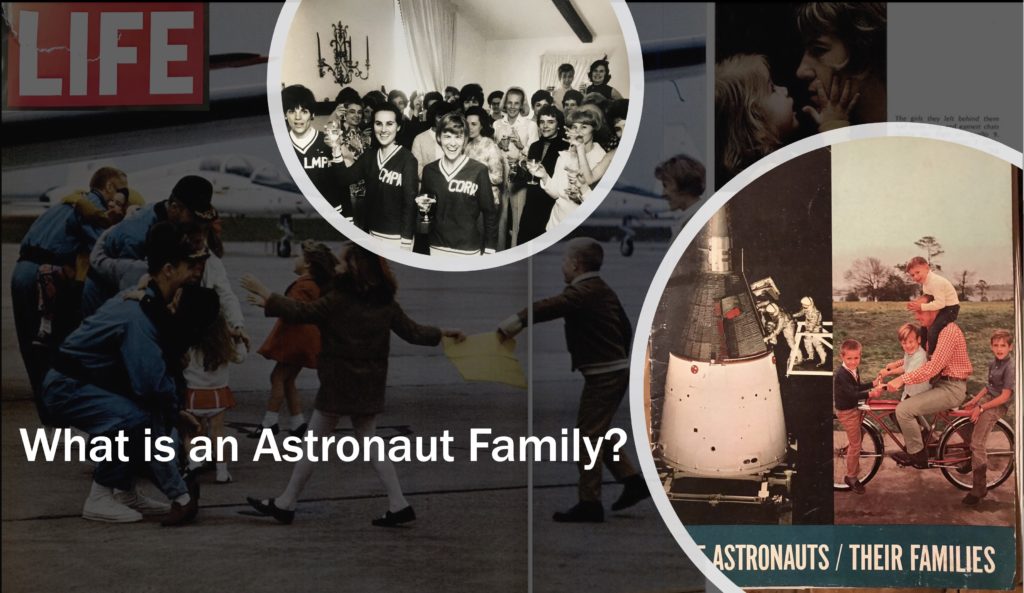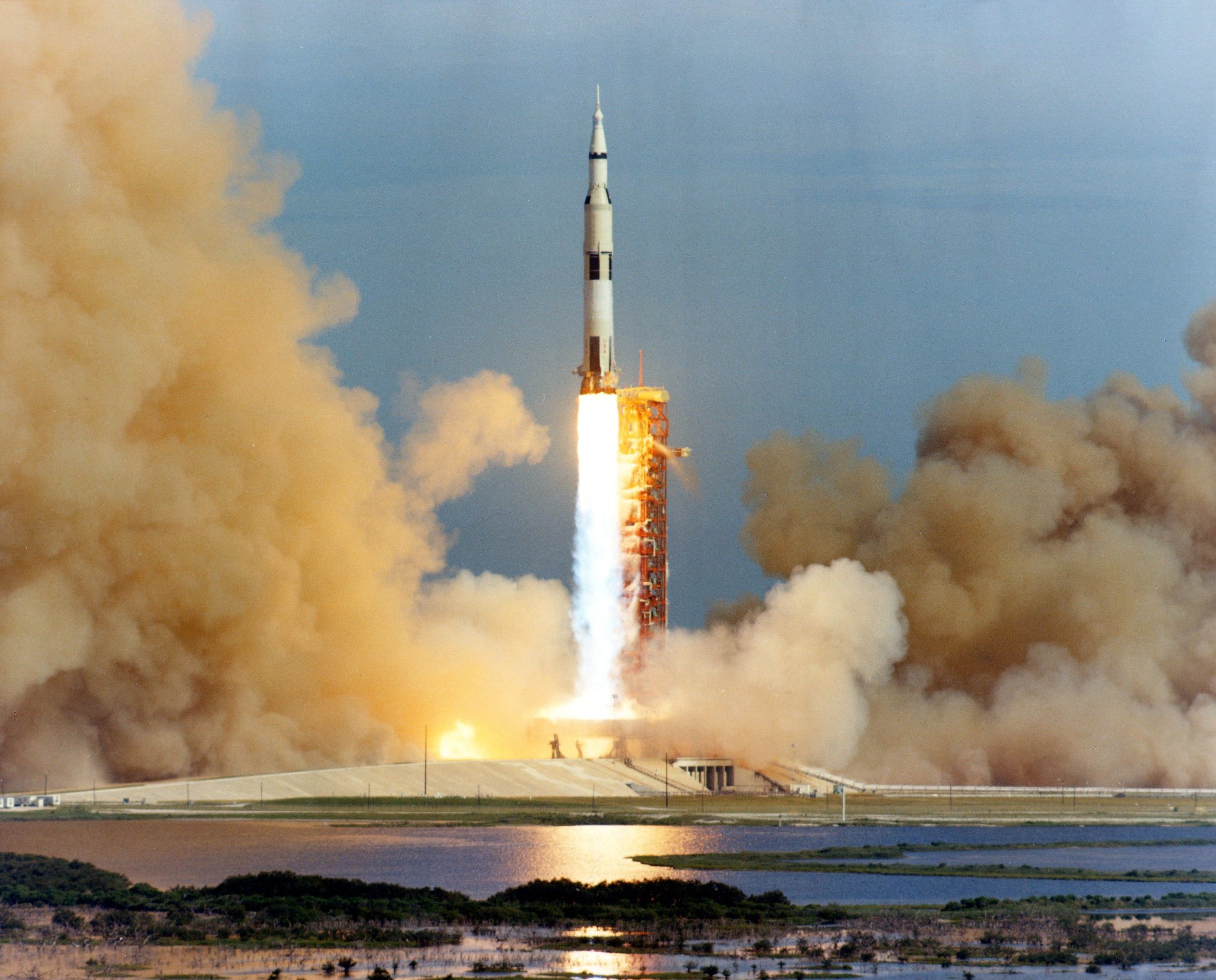“What was it like to walk on the moon?” My father* has heard that question thousands of times. I’ve heard it dozens of times, as his daughter. There is no quick, easy answer. The reality was rich and deep and complex, for each of the individuals who went to the moon. Moreover, the question overlooks the tremendous efforts of hundreds of thousands to accomplish the lunar landings. There is so much complexity to the reality of the scientific achievement as well as to the human endeavors that got us to the moon in the 1960s. My new research project is a venture to add another layer to the history.
*My father: David R. Scott (Gemini 8, Apollo 9, Apollo 15). Seventh man to walk on the moon in 1971 on Apollo 15. First, along with James B. Irwin, to drive on the moon in the Lunar Roving Vehicle.
Motivation for the Project
This project is a long time coming. For many years I avoided talking about my own background growing up as a child of an astronaut who went to the moon. It’s an odd thing to bring up in conversation, out of the blue, without seeming like one wants attention. And the reality of my childhood is more varied and complex than can be easily told in short sound bites.
Yet I’ve come to appreciate the history, and my history, more over time. What can I add to the story? So much has already been written. So many excellent books on the science of the U.S. space missions, the place of the missions in history, the individual stories of those who participated. I’ve never had a desire to write a memoir, but I have long wanted to write about the reality of what it was like to be an astronaut (seeing and hearing my dad’s experiences) and part of an astronaut family at the beginning of the space era in the U.S. In many brief conversations over the years, and most often in the press, I’ve heard a lot of misconceptions about the realities.
For me, it is the “group” reality that is most intriguing. The common experiences of being part of the astronaut groups at a particular time and place. As a sociologist, I see the world in terms of groups – we are all part of many groups, not always of our choosing. We are born into a particular family, a particular community, a particular country at a particular time. These groups – or social contexts – shape our lives and give us experiences common to others in the group. There are always individual variations – we are unique in our individuality – but I’m most interested in the commonalities of our experiences, what we share being part of the same group.
I began to be more reflective – and more intrigued – by my own childhood group experiences when I started reconnecting with my friends and neighbors from that time, in a series of reunions around the 50thanniversaries of the Apollo missions. Talking to my childhood friends – other astronaut children – we had so many of the same stories, so many commonalities in our stories, both from that time and over time as adults.
My reconnections also came at a time when my father was taking steps to preserve his own story and the larger history of the time – more on that in the next post (Primary Evidence at Emory). The confluence of events inspired me to embark on a journey to discover more about my own history through the lens of sociology (my expertise/training). The sociology of the early space era is something that not many have researched or written about. And my first step was to teach a course about this, because I’m much more of a teacher, a speaker, than I am a writer.
Last spring, I taught my seminar course (SOC 461: Moon Bound in the 60s: A Sociology of the Apollo Era) and I had a phenomenal group of students. They helped me see the depth of the group stories still to be told, particularly of the astronaut families, the work culture of the astronauts, and the media’s coverage and image construction. As a researcher I’ve been taught to look for “gaps” in the research, and, thus, my research project is focused on these social and cultural aspects of our group experiences, rather than on the STEM or political contributions of the lunar missions. I am now on a sabbatical year to embark on the project, gathering data from primary sources, including the words and experiences recorded in the records of the time (archives) and oral history interviews with other participants. Here is an overview of my research project and its broader context.
Research Project Overview
“I believe that this nation should commit itself to achieving the goal, before this decade is out, of landing a man on the moon and returning him safely to the earth.”
– President John F. Kennedy. 1961. (Special Message to the Congress on Urgent National Needs. Delivered before a joint session of Congress May 25, 1961.)
By 1969 the U.S. achieved Kennedy’s audacious goal. By the end of the Apollo program, 12 men had walked on the moon and 24 men orbited the Moon. Yet, no human has been beyond Earth’s orbit since the last Apollo lunar mission in 1972. The Apollo missions were extraordinary scientific achievements; they were the culmination of the early space era; they were also historical events rooted in time and place. This is an era when science fiction becomes science fact. Space flight moves from the pages of science fiction to the realm of the real world, a world not only of science and technology, but a world of particular social contexts. What does this mean?

What are the sociological aspects of science fiction becoming science fact? New social realities, such as the new occupational role of “astronaut.” Prior to the 1950’s “astronauts” existed as imaginary workers in fictional worlds. Now “astronauts” become real workers in specific social contexts in a real historical time and place. So, how then does the “astronaut” role become realized? How is the worker-role related to the Astronaut’s family at home? How are Astronauts and Astronaut Families defined and constructed for the public? How are these roles inhabited and enacted by real participants?

Moon Shot Astronaut Families: Exploring Image vs Reality in the early space era.
My research project uses a sociological lens to explore the Moon Shot era, particularly Astronaut Groups 1-3 during the U.S. Gemini and Apollo Programs (1962-1972). I focus on the emergence of a new occupation (Astronaut) and its integral connection to particular work-family dynamics (the Astronaut Family), both of which were foundational to the new organization of NASA and the success of NASA’s Gemini and Apollo programs. My research will look at images and realities of “the Astronaut” and “the Astronaut Family” during this early era, using primary sources, including Emory collections (Scott Family Papers), other archival collections (LIFE reporter Dora Jane Hamblin’s Papers; LIFE Editorial Records; Tom Wolfe Papers) and oral history interviews.
“Primary sources are firsthand accounts of events, recorded or produced by witnesses or recorders who were present at the time of the event or experienced the conditions being documented. They represent the most direct evidence of an event because the materials were created at the time. Primary sources include diaries, photographs, letters, maps, organizational manuals, speeches, films, interviews.”
– Emory Libraries. See also: What are Primary Sources? in their U.S. History Research Guide.
My research methods intentionally focus on primary sources to get closer to the actual events and people in their own time. History is often about interpretation. I want to use sources that are as close to the original events as possible.
Many, many books and articles and websites have documented and are devoted to the missions and the science of the Apollo era. Far fewer have explored the social realities and the group stories of those who lived it. My research will be a (long) journey into these other aspects of the Moon Shot era. I’ll offer periodic glimpses into this journey on the blog.
Why Blog?
So, why this blog? Simply: I want to share my project and the research journey as I go along, and I want more control over my content than social media allows. This is a way that I can keep interested people up to date with some of my research discoveries. The blog will be a place where I can record a few vignettes about the project and interesting “finds” during my research journey, highlighted with photos of primary artifacts that provide windows into the past. NOTE: Posts will be occasional and random in timing.
A few book recommendations
I like these three books as broad background to the early space program in the U.S., particularly illuminating about the astronauts and the Apollo missions, with some views of the astronaut families.
- Chaikin, Andrew. 1994/2007. A Man on The Moon: The Voyages of the Apollo Astronauts. Reissue ed. New York, NY: Penguin Books.
- Farmer, Gene and Dora Jane Hamblin. 1970. First on the Moon: A Voyage with Neil Armstrong, Michael Collins, Edwin E. Aldrin Jr. Boston: Little, Brown and Company.
- Wolfe, Tom. 1979/2008. The Right Stuff. 2nd ed. New York, NY: Picador.
I like these two books for understanding the larger historical context and impact of the U.S. space program in the 60s.
- Brinkley, Douglas. 2020. American Moonshot: John F. Kennedy and the Great Space Race. Harper Perennial.
- Shesol, Jeff. 2021. Mercury Rising: John Glenn, John Kennedy, and the New Battleground of the Cold War. W. W. Norton & Company.
Top (feature) photo: Apollo 15 Lift Off 5, Tower Cleared. Credit: NASA. Public Domain.
Copyright © Tracy L. Scott 2024. All rights reserved.

One thought on “MoonShot Astronaut Families: Preface”
Comments are closed.